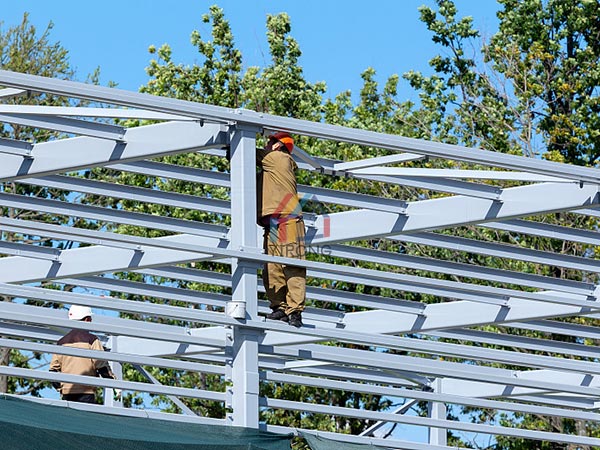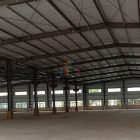Classification of steel construction truss structure
From the perspective of mechanics, when the shape of the truss is similar to the bending moment diagram of the simply supported beam, the axial force of the upper and lower chords is evenly distributed, the axial force of the web member is small, and the material is saved. From the perspective of materials and production, the wooden trusses are made into triangles, the steel trusses for steel structure construction are trapezoidal or parallel chord shapes, and the reinforced concrete and prestressed concrete trusses are polygonal or trapezoidal.
The ratio of the height to the span of the steel construction truss: the general three-dimensional truss is 1/12~1/16, the three-dimensional arch is 1/20~1/30, and the tensioned three-dimensional arch is 1/30~1/50. There are specific provisions in manuals and standards. Steel trusses are used in a wide range of applications. When selecting a truss method, the use of the truss, materials and support methods, and construction conditions should be comprehensively considered. The selection principle is to strive to minimize the amount of materials and labor used in production and installation under the premise of satisfying the application requirements.

Triangular truss
Under the nodal loads evenly distributed along the span of a triangular truss, the axial force of the upper and lower chords is large at the end points and gradually decreases towards the mid-span, while the axial force of the web members is opposite. Triangular steel trusses are mostly used in roof trusses of tile roofs because of the large difference in the internal force of the chords and the unreasonable material consumption.
Trapezoid Truss
Compared with the triangular truss, the stress of the rods has been improved, and it is easier to meet the process requirements of some industrial plants when used in roof trusses. If the upper and lower chords of the trapezoidal steel truss are parallel, it is a parallel chord truss, and the stress of the members is slightly worse than that of the trapezoid, but the type of web members is greatly reduced, and they are mostly used in bridges and trestle bridges.
Polygon Truss
Polygonal truss is also called polyline truss. The upper chord node is located on the quadratic parabola. If the upper chord is arched, the bending moment generated by the inter-node load can be reduced, but the fabrication is more complicated. Under the effect of uniform load, the shape of the steel truss is similar to the bending moment figure of the simply supported beam, so the axial force of the upper and lower chords is evenly distributed, the axial force of the web member is small, and the material is saved. It is a truss method commonly used in engineering.
Empty truss
The hollow truss basically takes the shape of a polygonal truss, without sloping web bars, only the vertical web bars and the upper and lower chords are connected. The axial force distribution of the member is similar to that of the polygonal truss, but the bending moment value of the rod end changes greatly under the effect of asymmetric loading. The advantage is that there are fewer rods at the intersection of the nodes, and the construction is convenient.












